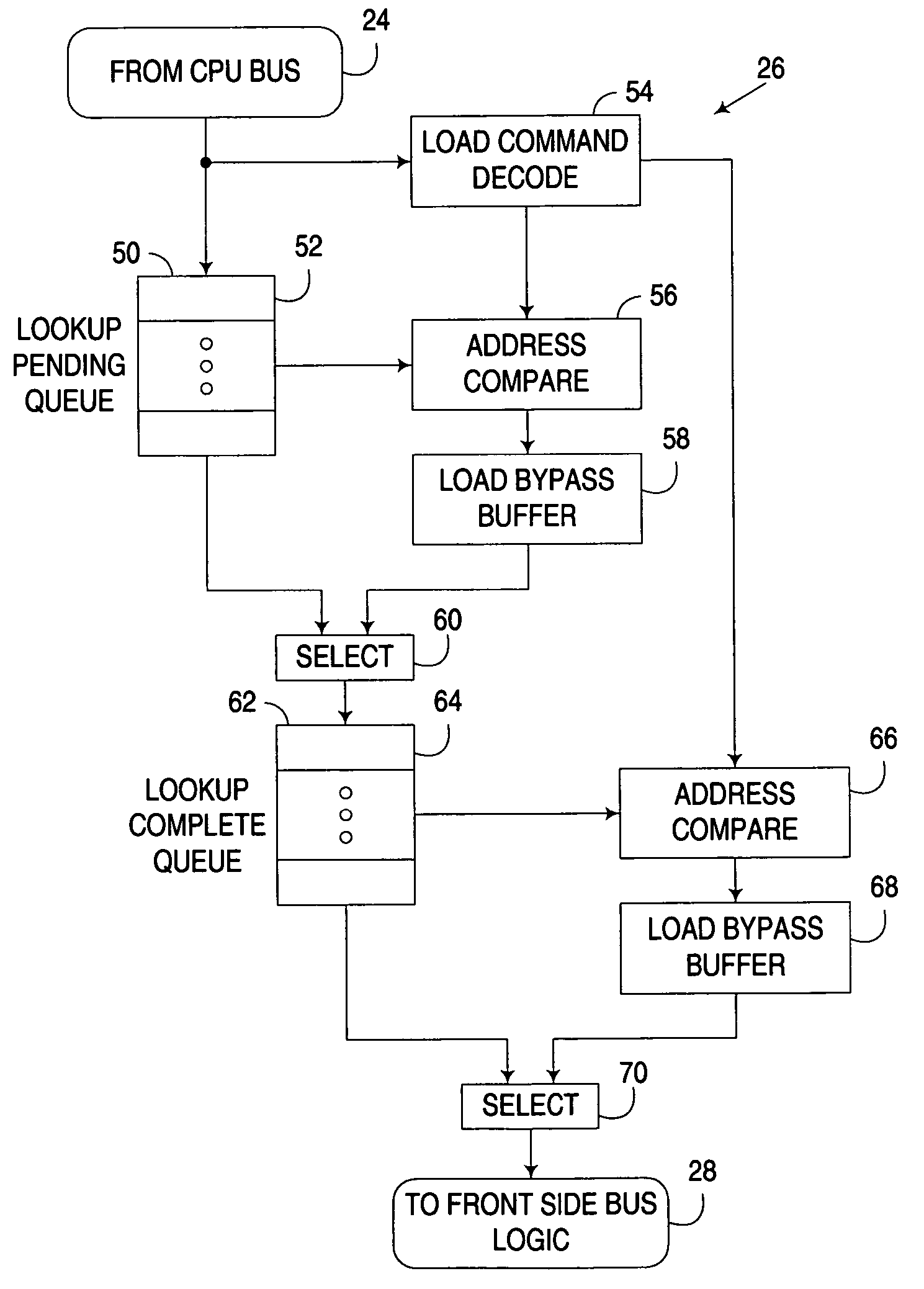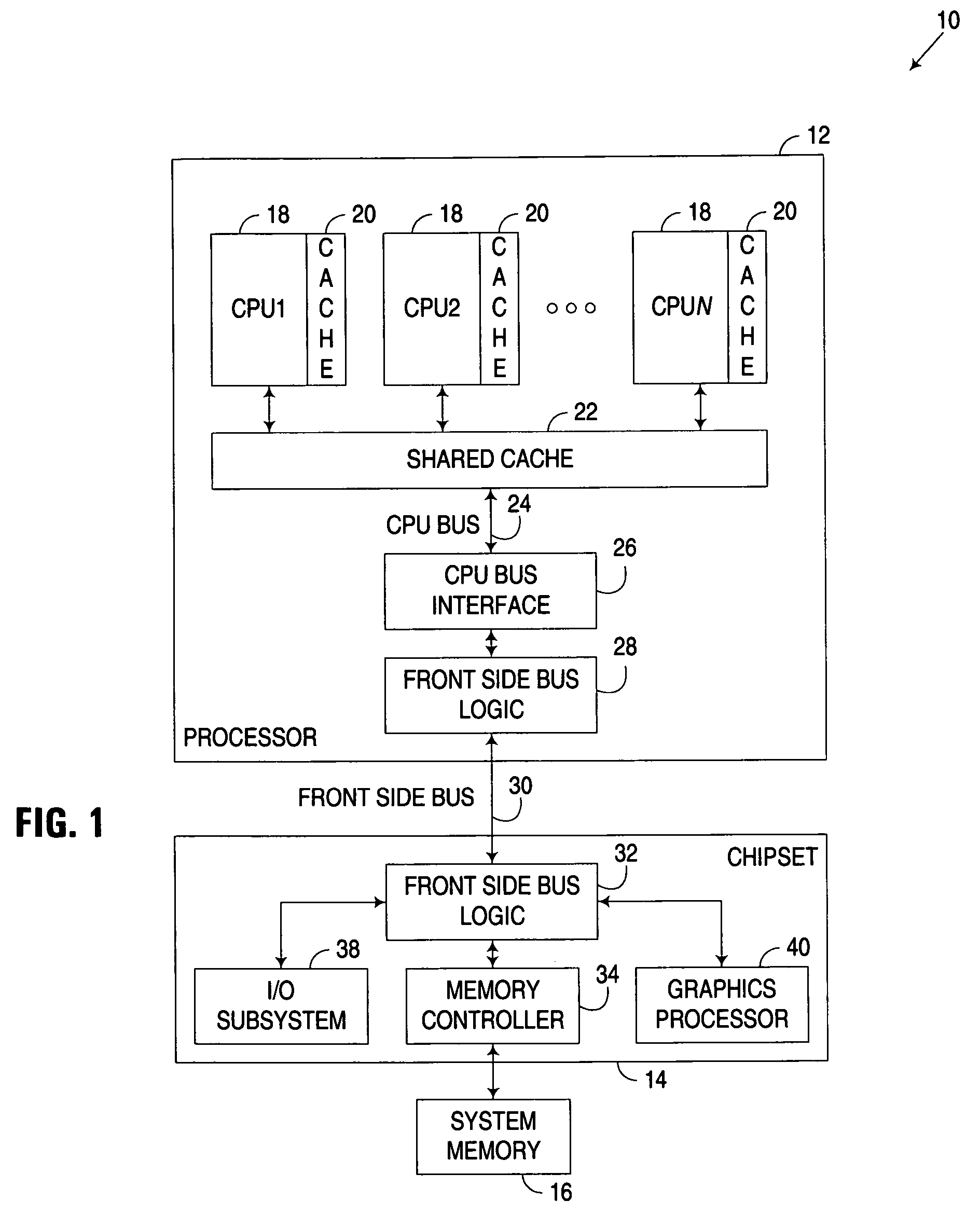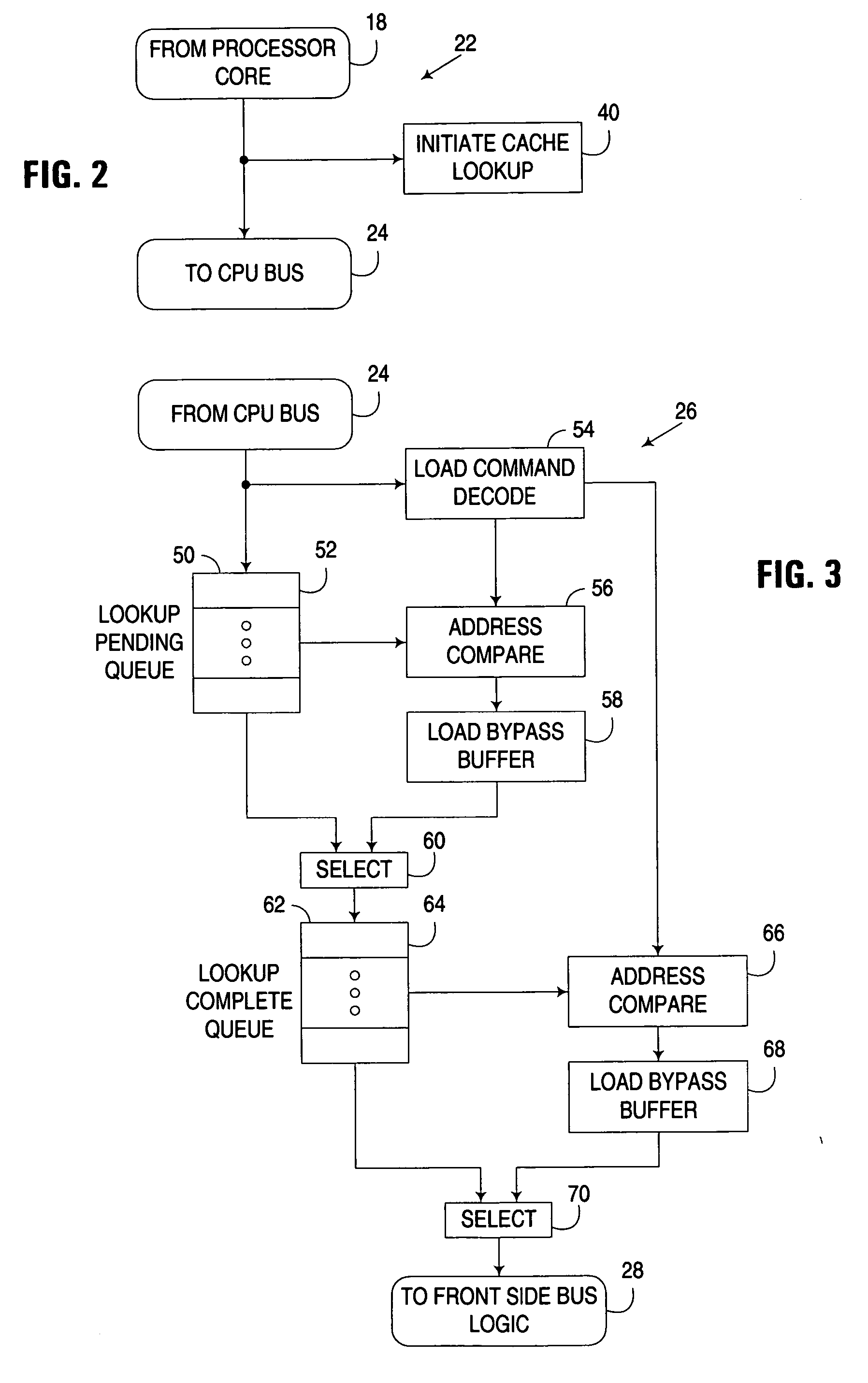Fast path memory read request processing in a multi-level memory architecture
- Summary
- Abstract
- Description
- Claims
- Application Information
AI Technical Summary
Benefits of technology
Problems solved by technology
Method used
Image
Examples
Embodiment Construction
[0018] The embodiments discussed and illustrated hereinafter selectively reorder a speculatively issued memory read request being communicated to a lower memory level in a multi-level memory architecture ahead of at least one previously received and pending request awaiting communication to the lower memory level. The issuance of a request within the context of the invention constitutes an initiation of an operation to communicate the request to a lower memory level in a multi-level memory architecture. However, it will be appreciated that after a request has been issued, there may be some delay before the request is actually communicated to the lower memory level. Furthermore, it will be appreciated that a request is speculatively issued when the operation to communicate the request to the lower memory level is initiated prior to receiving the results of a cache lookup operation on a higher memory level, since, at the time the operation is initiated, it is not known whether the req...
PUM
 Login to View More
Login to View More Abstract
Description
Claims
Application Information
 Login to View More
Login to View More - R&D
- Intellectual Property
- Life Sciences
- Materials
- Tech Scout
- Unparalleled Data Quality
- Higher Quality Content
- 60% Fewer Hallucinations
Browse by: Latest US Patents, China's latest patents, Technical Efficacy Thesaurus, Application Domain, Technology Topic, Popular Technical Reports.
© 2025 PatSnap. All rights reserved.Legal|Privacy policy|Modern Slavery Act Transparency Statement|Sitemap|About US| Contact US: help@patsnap.com



